341 ANDROGENETIC ALOPECIA AT VARIOUS AGES AND PROSTATE CANCER RISK IN AN EQUAL ACCESS MULTIETHNIC CASE CONTROL SERIES OF VETERANS
April 2012
in “The Journal of Urology”

TLDR Early baldness increases prostate cancer risk, radiotherapy and surgery have similar second cancer rates, and ALA may reduce prostate cancer risk.
This document contains three studies related to prostate cancer. The first study examined the relationship between androgenetic alopecia (AA) and prostate cancer risk in a multiethnic cohort of veterans. The results showed that men reporting earlier onset of AA were at increased risk for prostate cancer and suggestively had more aggressive disease. The second study compared the incidence of second malignancy development after external-beam radiotherapy (EBRT) and brachytherapy (BRT) for prostate cancer and found that the incidence of second malignancy after prostate cancer radiotherapy was not significantly different than surgery when adjusted for age of the patient and prior smoking history. The third study conducted a meta-analysis to determine the association between dietary omega-3 and omega-6 fatty acids with prostate cancer risk from prospective studies. The results showed that high intake of alpha-linolenic acid (ALA) may reduce the risk of prostate cancer, while intake of long-chain n-3 PUFA and n-6 PUFA do not significantly affect the risk of prostate cancer.
View this study on auajournals.org →
Cited in this study
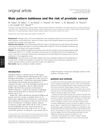
research Male pattern baldness and the risk of prostate cancer
Men who experienced baldness at age 20 may have double the risk of getting prostate cancer.
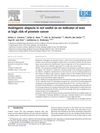
research Androgenic alopecia is not useful as an indicator of men at high risk of prostate cancer
Baldness at age 40 is not linked to a higher risk of aggressive prostate cancer.
research Male pattern baldness and prostate cancer risk in a population-based case–control study
Men who start losing hair at age 30 may have a lower risk of prostate cancer.
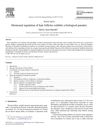
research Hormonal regulation of hair follicles exhibits a biological paradox
Androgens can both stimulate and cause hair loss, and understanding their effects is key to treating hair disorders.

research Psychological Effect, Pathophysiology, and Management of Androgenetic Alopecia in Men
Minoxidil and finasteride can slow hair loss and stimulate regrowth, but won't restore all lost hair or reverse complete baldness.
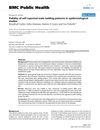
research Validity of self reported male balding patterns in epidemiological studies
Men can report their own balding patterns well enough for large health studies.

research Follow-Up of 1 mg Finasteride Treatment of Male Pattern Baldness-Difference between Clinical Trials and Private Office Follow-Up: Influences on Prescribing Habits Evaluated
Finasteride showed limited hair growth and low patient compliance in treating male pattern baldness.

research Androgenetic alopecia: pathogenesis and potential for therapy
Hair loss needs more research for better treatments.

research Androgenetic alopecia and prostate cancer: findings from an Australian case-control study.
The conclusion is that there might be a link between certain types of baldness and prostate cancer, which could be due to shared hormonal pathways.
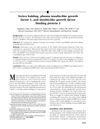
research Vertex balding, plasma insulin-like growth factor 1, and insulin-like growth factor binding protein 3
Men with balding at age 45 had higher IGF-1 and lower IGFBP-3, suggesting these factors might be important in male pattern baldness.
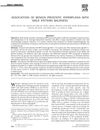
research Association of Benign Prostatic Hyperplasia with Male Pattern Baldness
Men with enlarged prostates often have more severe baldness.